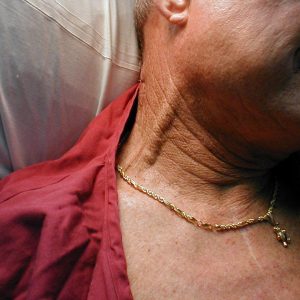This article explains what massive jugular vein distension is, its most common causes, associated symptoms, and when to seek medical attention.
What Is Jugular Vein Distension?
The jugular veins are large blood vessels that run on both sides of the neck and are responsible for carrying deoxygenated blood from the brain and face back to the heart. Under normal conditions, these veins are not prominently visible, especially when a person is in a semi-upright position.
Jugular vein distension (JVD) refers to a visible bulging or prominence of the jugular veins, typically noticeable above the clavicle. It is assessed in a semi-recumbent position at about a 45-degree angle. When JVD is markedly visible and persistent—particularly without exertion—it can be a sign of elevated central venous pressure (CVP), which may reflect serious underlying medical conditions.
According to the American Heart Association (AHA) and MedlinePlus (U.S. National Library of Medicine), JVD is a valuable bedside indicator of potential heart or lung dysfunction.





